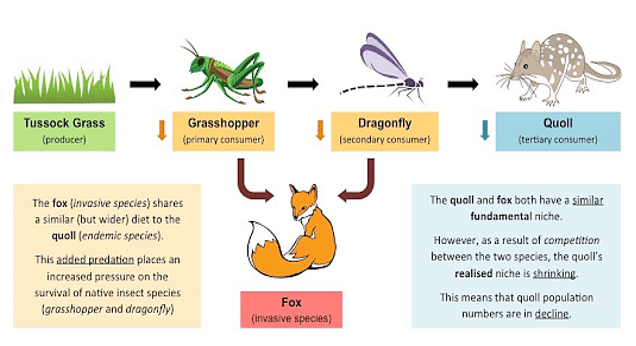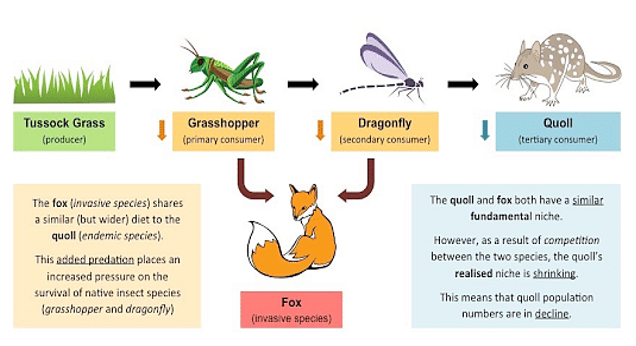- Courses
- GS Full Course 1 Year
- GS Full Course 2 Year
- GS Full Course 3 Year
- GS Full Course Till Selection
- Online Program
- GS Recorded Course
- NCERT (Recorded 500+ Hours)
- Polity Recorded Course
- Geography Recorded Course
- Economy Recorded Course
- AMAC Recorded Course
- Modern India, Post Independence & World History
- Environment Recoded Course
- Governance Recoded Course
- Science & Tech. Recoded Course
- International Relations and Internal Security Recorded Course
- Disaster Management Module Course
- Ethics Recoded Course
- Essay Recoded Course
- Current Affairs Recoded Course
- CSAT
- 5 LAYERED ARJUNA Mentorship
- Public Administration Optional
- ABOUT US
- OUR TOPPERS
- TEST SERIES
- FREE STUDY MATERIAL
- VIDEOS
- CONTACT US
Report on Invasive Alien Species
Report on Invasive Alien Species
05-09-2023

Latest Context:
Recently, the Intergovernmental Platform on Biodiversity and Ecosystem Services (IPBES) released “Assessment report on invasive alien species and their control”.
Some key findings of the report are:
- More than 37,000 alien species have been introduced by human activities across all regions around the world.
- The damages happened to the global economy due to IAS was around $423bn in 2019.
What are Invasive Alien Species (IAS)?
- IAS, also known as Invasive Non-Native Species (INNS) or simply invasive species, refer to plants, animals, fungi, or microorganisms that are introduced to an ecosystem outside their native range and have the potential to cause harm to the environment, economy, or human health.
- These species are typically introduced through human activities such as trade, travel, and agriculture and can outcompete native species, disrupt ecological processes, and cause economic and ecological damage.

Impact of IAS:
-
Ecological Impact:
- Biodiversity Loss: Invasive species often outcompete and displace native species, leading to a reduction in biodiversity. This can result in the decline or extinction of native plant and animal species.
- Altered Ecosystems: IAS can disrupt natural ecological processes, such as nutrient cycling, pollination, and predation. These disruptions can lead to changes in ecosystem structure and function.
- Habitat Alteration: Invasive species can modify habitats by changing the availability of food, water, and shelter. This alteration can affect the survival and behaviour of native species.
-
Economic Impact:
- Agricultural Damage: Invasive pests and pathogens can damage crops and reduce agricultural yields, leading to economic losses for farmers and the agricultural industry.
- Forestry Impact: Invasive insects and diseases can harm forests, impacting timber production and ecosystem services provided by forests.
- Fisheries Impact: Invasive species in aquatic ecosystems can compete with or prey on native species, affecting commercial and recreational fisheries.
- Infrastructure Costs: Some invasive species can damage infrastructure like buildings, roads, and bridges, leading to repair and maintenance costs.
- Human Health and Safety:
- Health Risks: Some invasive species can carry diseases that can be transmitted to humans or domestic animals.
- Safety Concerns: Invasive species like certain plants and animals may pose physical risks to people. For example, invasive plants can create hazards along roadways.
Some examples of IAS in India are:
-
Water Hyacinth (Eichhornia crassipes):
- Origin: South America
- Impact: Water hyacinth is a highly invasive aquatic plant that spreads rapidly, covering water bodies and impeding water flow. It depletes oxygen levels in water, disrupts aquatic ecosystems, and hinders activities like fishing and navigation.
-
Lantana (Lantana camara):
- Origin: Central and South America
- Impact: Lantana is an invasive shrub that forms dense colony , outcompeting native vegetation. It reduces availability for livestock, increases the risk of wildfires, and can be toxic to some wildlife species.
-
Parthenium Weed (Parthenium hysterophorus):
- Origin: North America
- Impact: Parthenium weed, also known as "Congress grass," is an invasive annual plant that poses a threat to agriculture and human health. It can cause allergic reactions in humans and reduces crop yields by competing with cultivated plants.
-
African Catfish (Clarias gariepinus):
- Origin: Africa
- Impact: African catfish is an invasive fish species introduced for aquaculture. It has escaped into natural water bodies and competes with native fish species, potentially causing declines in native fish populations.
Must Check: Best IAS Coaching In Delhi



